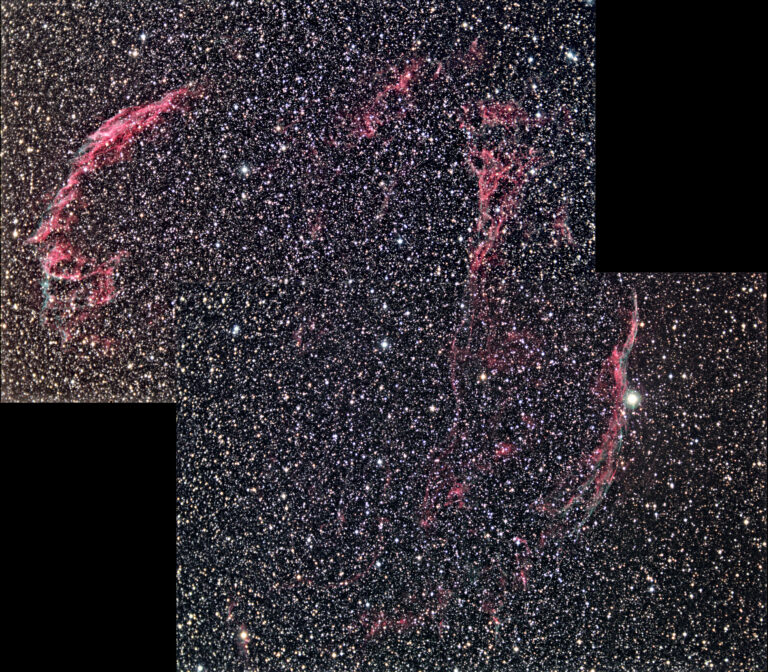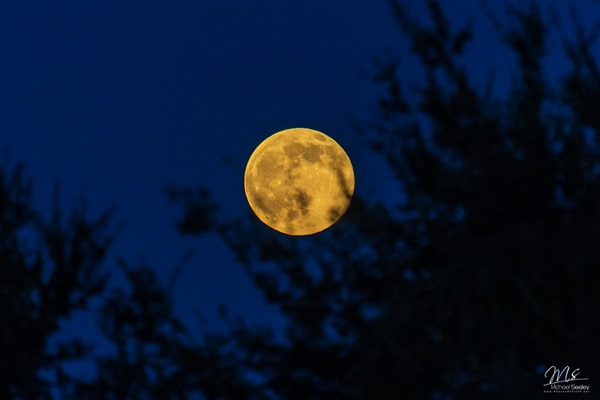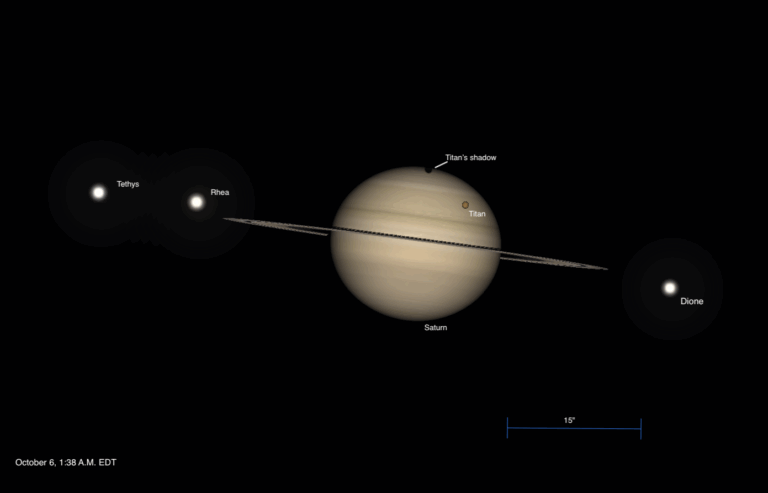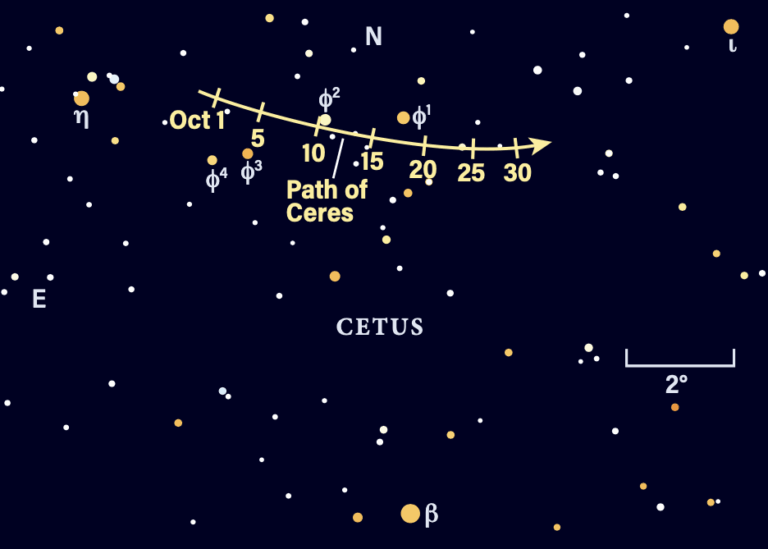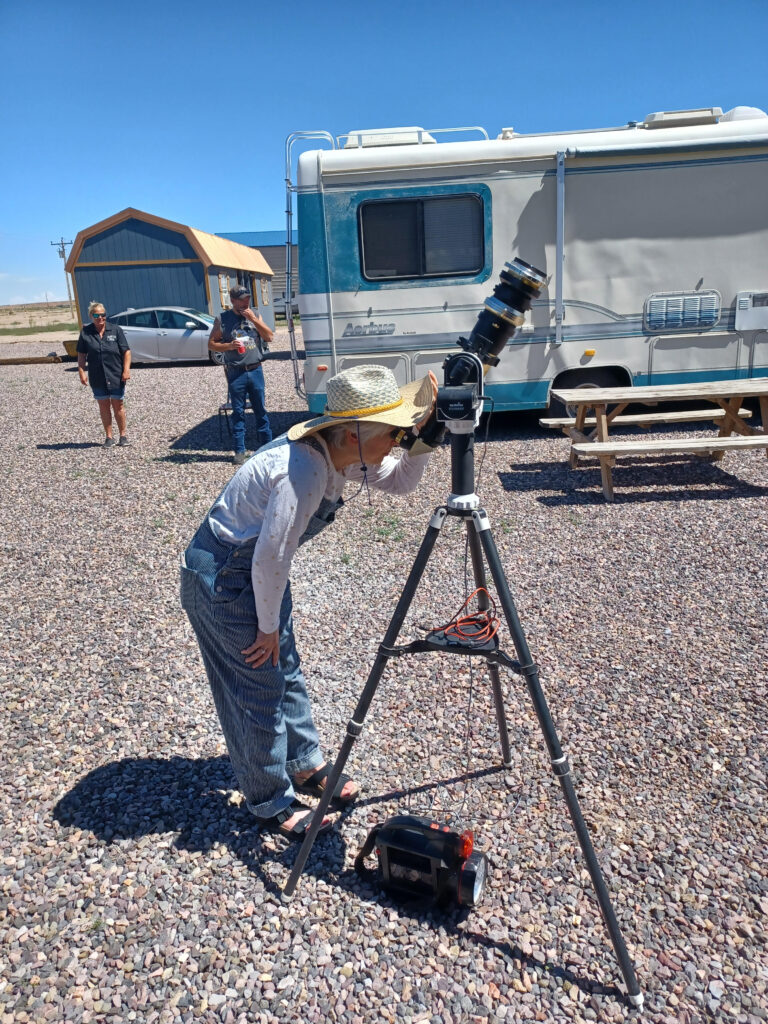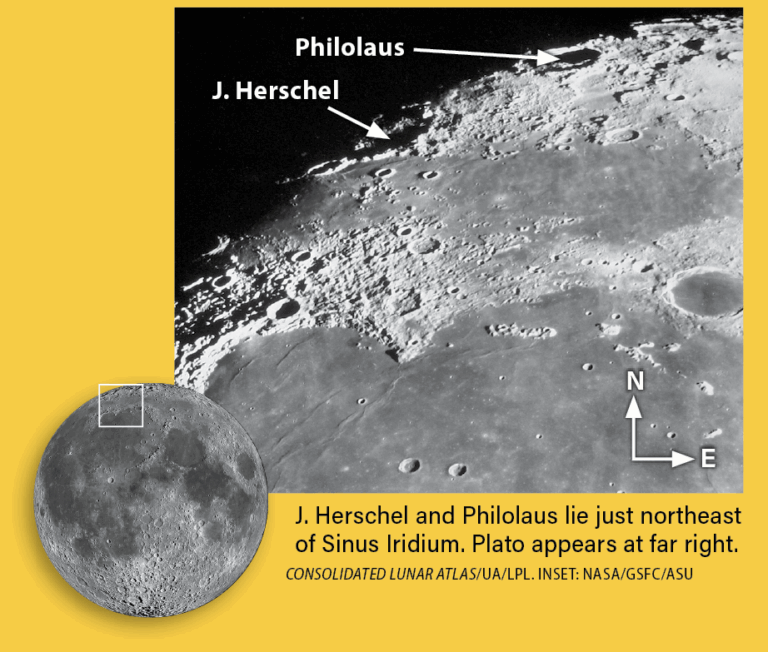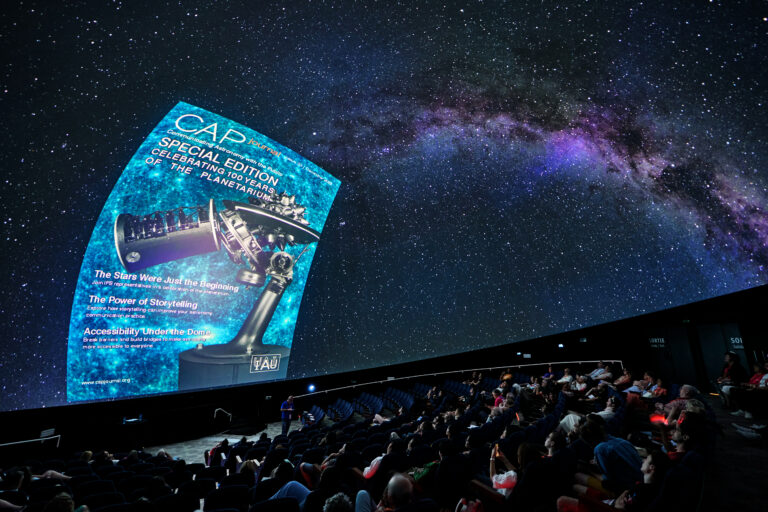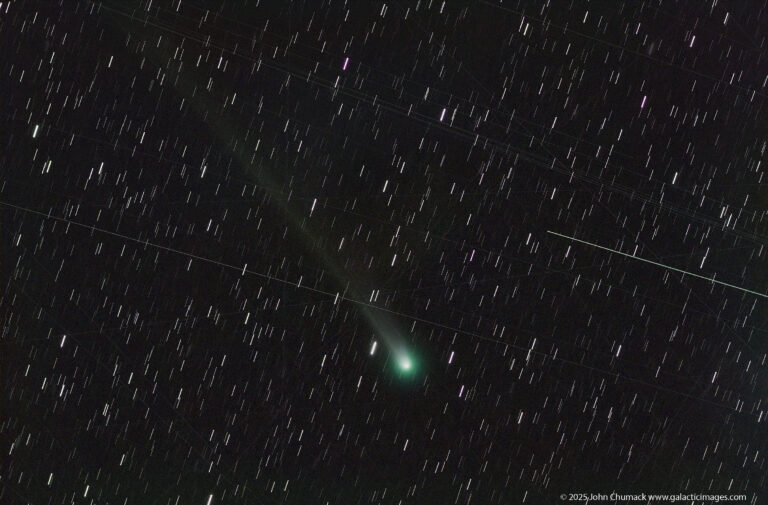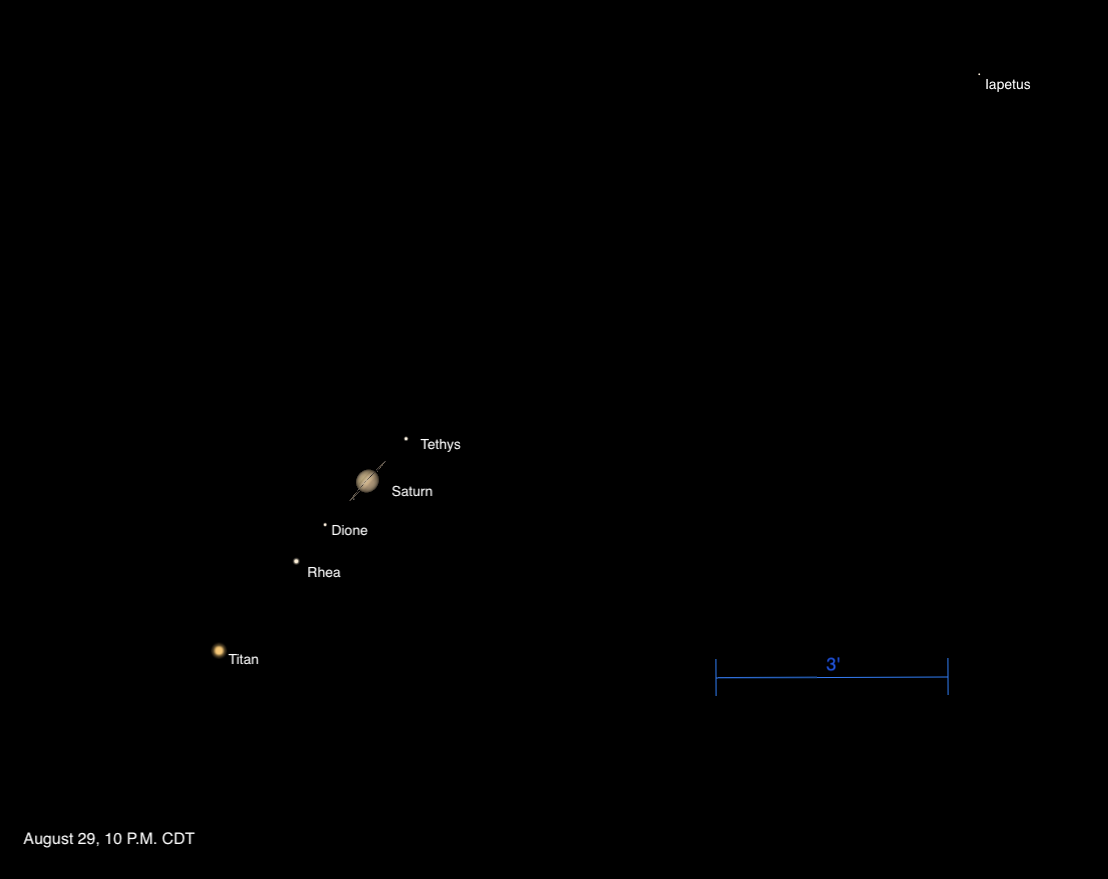
Key Takeaways:
- Saturn, at magnitude 0.7, will be visible in southwestern Pisces below the Circlet asterism, rising at 10 P.M. local daylight time and reaching its highest point around 2:30 A.M.
- Saturn's rings, spanning 43.5" and tilted at 2°, will be observable through a telescope.
- Several of Saturn's moons will be visible near the planet: Titan (magnitude 8, 3' east), Rhea and Dione (both magnitude 10, closer to Saturn than Titan), and Tethys and Iapetus (both magnitude 10, west of Saturn, with Iapetus at its brightest due to its icy hemisphere facing Earth).
- Relevant local times for sunrise (6:25 A.M.), sunset (7:36 P.M.), moonrise (12:53 P.M.), and moonset (10:23 P.M.) are provided, along with the moon phase (waxing crescent, 36% illuminated).
This evening Titan stands east of Saturn and Iapetus is far to the west, the latter approaching its greatest western elongation tomorrow. You can find the ringed planet already 15° high in the east at 10 P.M. local daylight time, continuing to rise until around 2:30 A.M., when it reaches the highest point in its path through our sky.
The magnitude 0.7 planet is the brightest point of light in southwestern Pisces, hanging below the Circlet asterism as it rises. Through a telescope, you’ll readily spot the magnificent rings, which stretch some 43.5” from end to end and are tilted by a mere 2°.
Titan is just over 3’ east of Saturn, shining brightest of all the planet’s moons at mid-8th magnitude. Moving inward toward the planet from the east, at 10 P.M. CDT you’ll find first Rhea and then Dione, both shining at 10th magnitude. On the western side of the world at that time is Tethys, also 10th magnitude, and then finally Iapetus, nearly 9.5’ west of the planet. Iapetus is at its brightest, its icy hemisphere turned toward Earth so that it reflects enough sunlight to also reach 10th magnitude.
Sunrise: 6:25 A.M.
Sunset: 7:36 P.M.
Moonrise: 12:53 P.M.
Moonset: 10:23 P.M.
Moon Phase: Waxing crescent (36%)
*Times for sunrise, sunset, moonrise, and moonset are given in local time from 40° N 90° W. The Moon’s illumination is given at 12 P.M. local time from the same location.
For a look ahead at more upcoming sky events, check out our full Sky This Week column.


